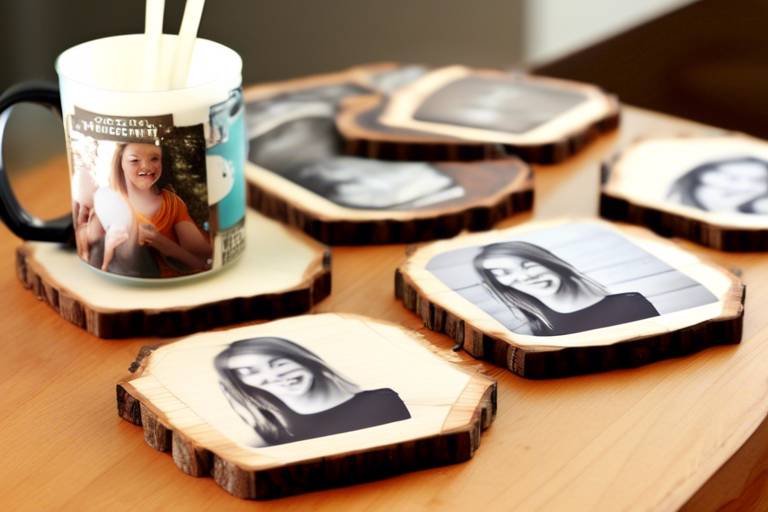Exploring Chip Carving: Detailing Techniques
This article delves into the art of chip carving, covering essential techniques, tools, and tips for both beginners and experienced carvers to enhance their skills and creativity in this intricate craft.
Chip carving is more than just a woodworking technique; it's a form of artistic expression that has roots dating back centuries. Originating from various cultures, this method involves removing small chips of wood to create intricate and often stunning designs. Imagine the satisfaction of transforming a simple piece of wood into a beautiful work of art with just a few careful cuts! The significance of chip carving lies not only in its aesthetic appeal but also in the rich history and tradition it carries. Each carving tells a story, reflecting the culture and craftsmanship of its creator. Whether you’re decorating a piece of furniture or crafting a unique gift, the beauty of chip carving is in its ability to enhance the natural grain and texture of wood, making each piece truly one-of-a-kind.
To successfully execute chip carving, you'll need a few essential tools that are designed specifically for this intricate craft. The most important tool in your arsenal is the chip carving knife, which features a sharp, pointed blade that allows for precision cuts. Alongside this, a set of chisels can come in handy for larger projects or more detailed work. Each tool has its own role in achieving the level of detail you desire. For instance, a v-tool is excellent for creating fine lines and intricate patterns, while a gouge can help you remove larger sections of wood. Understanding how to use these tools effectively will significantly impact the quality of your carvings.
Mastering basic chip carving techniques is crucial for beginners. Start by getting comfortable with knife handling; a steady hand and controlled movements are key. Practice chip removal by making small, deliberate cuts. This not only helps you gain confidence but also improves your overall technique. Additionally, transferring patterns onto your wood is an essential skill. You can use carbon paper or simply draw your design directly onto the wood. Remember, practice makes perfect, and don’t be afraid to experiment with different styles and techniques to find what works best for you!
The type of wood you choose can significantly affect the outcome of your chip carving. Different woods have unique characteristics that influence both the ease of carving and the final appearance of your project. For example, basswood is a favorite among carvers due to its soft texture and fine grain, making it easy to carve and ideal for intricate designs. On the other hand, maple offers a beautiful finish but can be more challenging to work with due to its hardness. When selecting wood, consider factors such as grain pattern, hardness, and how well the wood takes stain or finish. Here’s a quick comparison of popular wood types for chip carving:
| Wood Type | Grain | Hardness | Best For |
|---|---|---|---|
| Basswood | Fine | Soft | Intricate designs |
| Maple | Hard | Hard | Durable items |
| Cherry | Medium | Medium | Elegant finishes |
| Pine | Coarse | Soft | Beginners |
Creating or selecting the right patterns is essential in chip carving. Your design can make all the difference between a mediocre piece and a stunning work of art. Start by sketching your ideas on paper, or use software to create digital patterns. Don’t hesitate to draw inspiration from nature, textiles, or even historical designs. Websites and books dedicated to woodworking often have a plethora of patterns to choose from. The key is to choose designs that resonate with you, as this personal touch will shine through in your work.
Once you have mastered the basics, advancing your skills is the next step. Techniques such as layering and shading can elevate your chip carving artistry to new heights. Layering involves carving multiple depths within a single design, creating a three-dimensional effect that adds depth and interest. Shading, on the other hand, can be achieved by varying the pressure and angle of your cuts, allowing for a more dynamic look. As you practice these advanced techniques, you’ll find that your confidence grows, and your creativity flourishes.
Finishing touches can enhance the beauty of your chip carvings. Techniques such as sanding, staining, and sealing are crucial in bringing out the best features of your work. Sanding smooths out any rough edges, while staining can add color and highlight the wood grain. Sealing your carvings protects them from damage and ensures they last for years to come. Remember, a well-finished piece not only looks better but also feels better to the touch!
Even experienced carvers can make mistakes. Whether it’s cutting too deep or not following the pattern closely, errors can happen. The key is to learn from them. Some common pitfalls include:
- Not sharpening tools regularly, leading to uneven cuts.
- Rushing through the process, which can compromise the quality of your work.
- Choosing the wrong type of wood for your design.
By being aware of these mistakes and taking your time, you can ensure smoother and more successful carving experiences.
Q: What is the best wood for beginners?
A: Basswood is highly recommended for beginners due to its softness and fine grain, making it easy to carve.
Q: How do I transfer a pattern onto wood?
A: You can use carbon paper or simply draw the design directly onto the wood with a pencil.
Q: What tools do I need to start chip carving?
A: At a minimum, you will need a chip carving knife and possibly a few chisels for more detailed work.
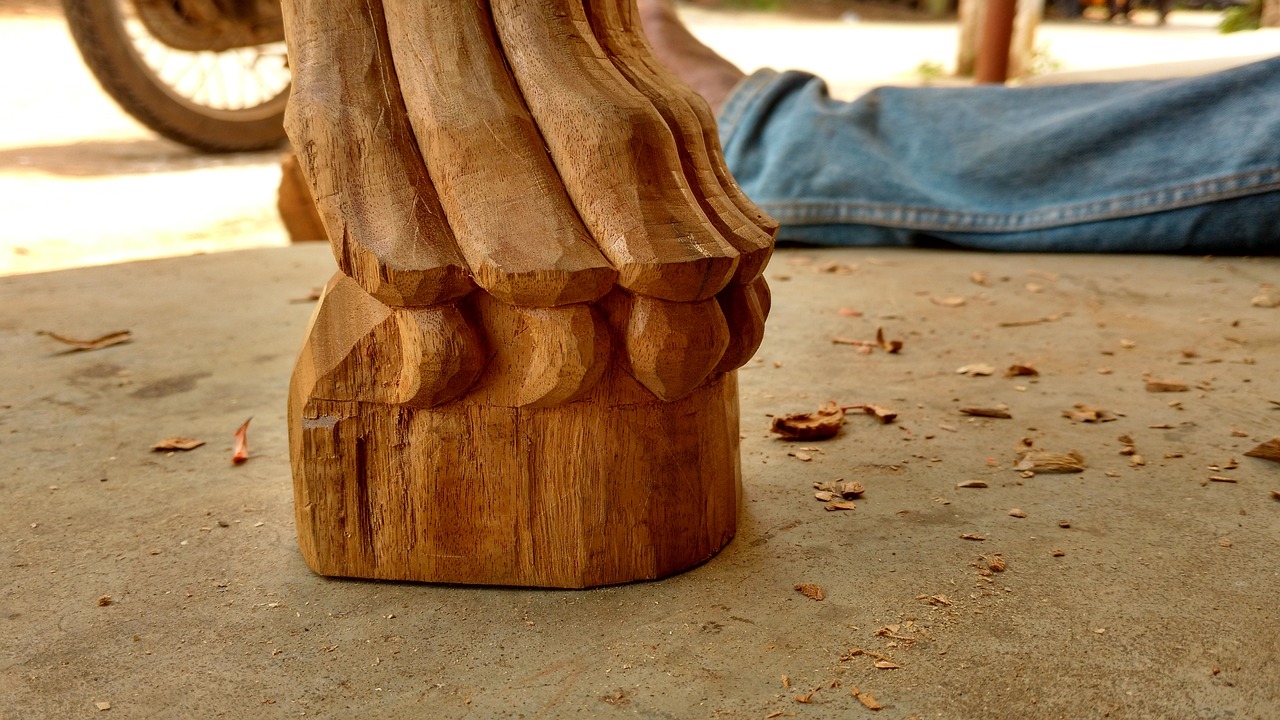
Understanding Chip Carving
Chip carving is not just a craft; it's a celebration of creativity and precision that has roots stretching back centuries. This decorative wood carving technique involves the meticulous removal of small chips of wood, resulting in stunning designs that transform ordinary pieces of wood into extraordinary works of art. Imagine peeling away layers of a cake, revealing intricate patterns beneath—this is the essence of chip carving. The beauty of this technique lies in its ability to create depth and texture, allowing artisans to express their individuality through every cut.
The origins of chip carving can be traced back to various cultures around the world, each adding its unique flair and significance. For instance, in Europe, particularly in regions like Germany and Scandinavia, chip carving has been a cherished tradition for generations. Historically, it served not only as an artistic expression but also as a means to enhance everyday objects, making them aesthetically pleasing. Today, chip carving continues to thrive, captivating both hobbyists and professionals alike.
What sets chip carving apart from other woodworking techniques is its unique aesthetic and the intricate details that can be achieved. The designs often feature geometric shapes, floral motifs, and even elaborate scenes that tell a story. The key to mastering this art form lies in understanding the interplay of light and shadow created by the chips, which can dramatically enhance the visual impact of the piece.
In addition to its historical significance, chip carving is an accessible art form that can be enjoyed by anyone with a passion for woodworking. Whether you're a seasoned craftsman or a curious beginner, the satisfaction of seeing your designs come to life is unparalleled. The beauty of chip carving is that it encourages experimentation; there's no right or wrong way to create your art. The only limit is your imagination!
Moreover, chip carving is a meditative practice. The rhythmic motion of carving can be incredibly therapeutic, allowing you to focus and unwind. It’s not just about the finished product; it’s about the journey of creating something beautiful from a simple block of wood. So, if you're looking to dive into a new hobby that combines artistry, history, and a bit of zen, chip carving might just be the perfect fit for you.
As you embark on your chip carving journey, remember that every expert was once a beginner. Embrace the learning process, and don’t be afraid to make mistakes. Each chip you carve brings you one step closer to mastering this intricate craft, and who knows? You might just discover a hidden talent along the way.
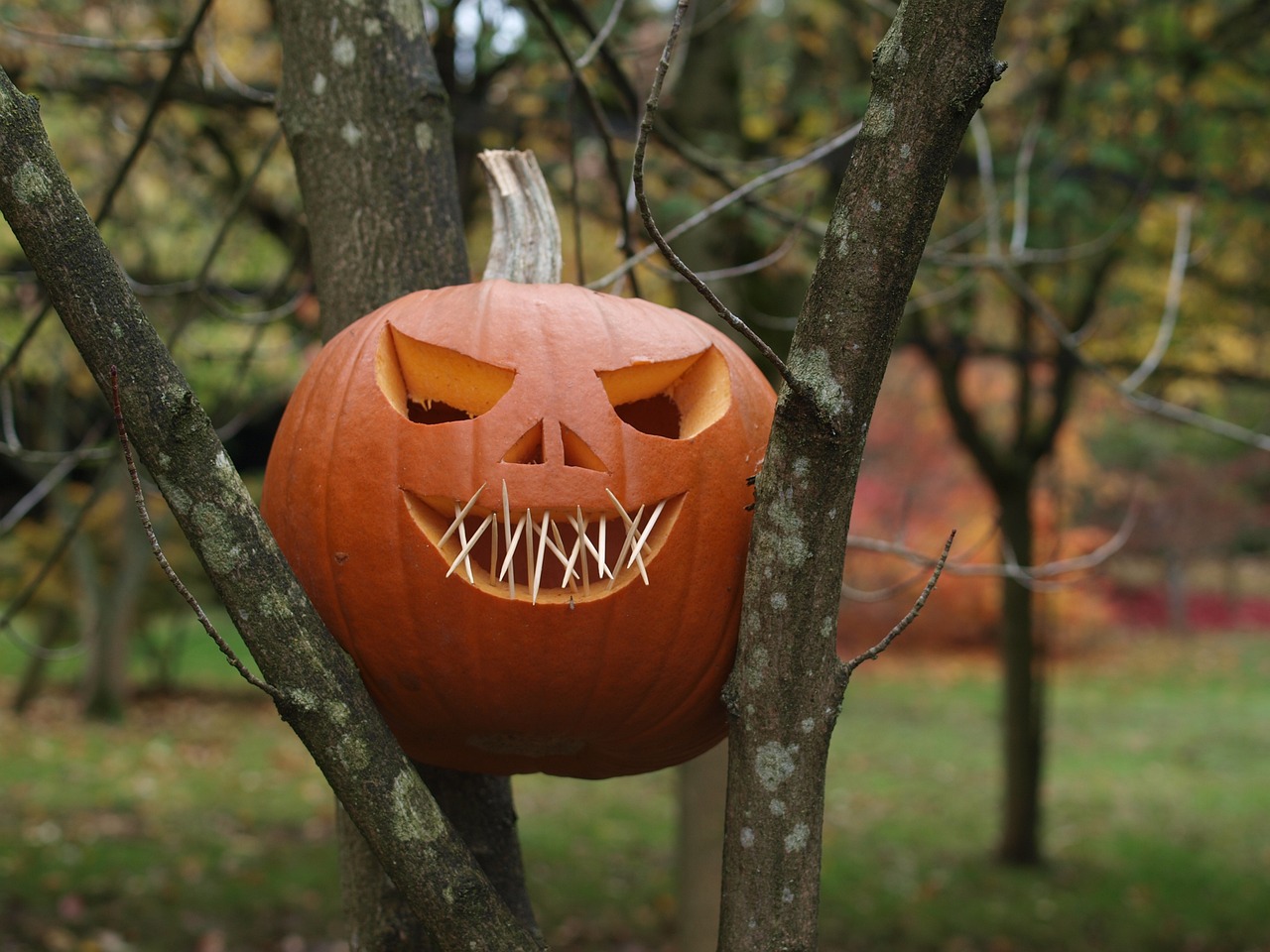
Essential Tools for Chip Carving
When it comes to chip carving, having the right tools is absolutely crucial for achieving the precision and detail that this art form demands. Imagine trying to paint a masterpiece with a brush that’s too thick; it just wouldn’t work, right? Similarly, the tools you choose can make or break your carving experience. So, let’s dive into the essential tools every chip carver should have in their arsenal.
At the heart of chip carving are the knives. A good chip carving knife is designed specifically for this craft, featuring a sharp blade that allows for clean cuts and intricate designs. Look for a knife that feels comfortable in your hand, as you’ll be using it a lot! The blade should ideally have a narrow tip for precision work, allowing you to remove small chips of wood without damaging the surrounding area. In addition to your primary carving knife, consider investing in a few specialty knives that can help with different effects and styles.
Next up are chisels. While chisels are often associated with larger carving projects, they can also play a significant role in chip carving. A set of chisels with varying widths will allow you to create different textures and depths in your work. When selecting chisels, look for those with a comfortable grip and high-quality steel blades that hold their edge well. A well-maintained chisel can be a game-changer, enabling you to achieve results that are both beautiful and professional.
Another tool worth mentioning is the V-tool. This tool is perfect for adding fine details and textures to your carvings. The V-tool’s unique shape allows for precise cuts that can enhance the overall design. If you want to create intricate patterns or add depth to your work, this tool is a must-have. Don’t forget to keep it sharp; a dull V-tool can lead to frustration and uneven cuts!
To keep your tools in top shape, you’ll also need some sharpening supplies. A good sharpening stone or a honing guide will help maintain the edges of your knives and chisels, ensuring they perform optimally. Remember, a sharp tool is not only safer but also makes the carving process much more enjoyable.
Finally, consider integrating a cutting mat into your workspace. This will protect your surfaces and provide a stable platform for your carving projects. A cutting mat can also help you visualize your designs better, making it easier to plan your cuts. Plus, it’s a great way to keep your workspace organized and tidy!
In summary, the essential tools for chip carving include:
- Chip carving knife - for precision cuts
- Chisels - for varied textures and depths
- V-tool - for fine details
- Sharpening supplies - to keep your tools in top condition
- Cutting mat - for a stable and protective workspace
With these tools in hand, you’re well on your way to creating stunning chip carvings. Remember, the right tools can inspire creativity and enhance your overall experience in this intricate craft. So, gather your supplies, and let your imagination run wild!
Q: Do I need to invest in expensive tools to start chip carving?
A: Not necessarily! While high-quality tools can enhance your experience, there are many affordable options available that can still produce excellent results. Start with the basics and upgrade as you gain more experience.
Q: How often should I sharpen my carving tools?
A: It depends on how much you carve, but a good rule of thumb is to sharpen your tools whenever they start to feel dull. Regular maintenance will make your carving smoother and more enjoyable.
Q: Can I use any type of wood for chip carving?
A: While you can technically use any wood, softer woods like basswood or butternut are recommended for beginners because they are easier to carve and less likely to splinter.

Basic Techniques of Chip Carving
Mastering the basic techniques of chip carving is essential for anyone looking to dive into this intricate and rewarding craft. Whether you're a complete novice or someone with a bit of experience under your belt, understanding these foundational skills will set you on the right path. Chip carving is all about precision and control, so let's break down some of the fundamental methods that will help you create stunning designs.
First and foremost, knife handling is crucial. The chip carving knife is your primary tool, and getting comfortable with it can make all the difference. Hold the knife firmly but not too tightly; you want to maintain control without straining your hand. The angle at which you hold the knife can also affect your cuts. A slight tilt can help you achieve cleaner lines and more defined chips. Practice makes perfect here, so don’t hesitate to spend some time just cutting simple shapes to get a feel for your knife.
Next, let’s talk about chip removal. This is where the magic happens! The goal is to remove small chips of wood to create your design. Start by making a series of shallow cuts around the perimeter of the area you want to carve. It’s important to work slowly and methodically; rushing can lead to mistakes that are hard to fix. Once you’ve established your outline, you can begin to remove the chips. A common technique is to use a series of controlled, downward strokes to pop the chips out. Remember, it’s better to take your time and get it right than to rush and have to start over!
Another key aspect is pattern transfer. Before you even pick up your knife, having a clear design in mind is essential. You can either draw your pattern directly onto the wood or transfer it using carbon paper. If you're feeling creative, sketching your own designs can be a fun way to personalize your work. Just make sure the lines are clear and easy to follow. Once your pattern is in place, it serves as a roadmap for your carving, guiding you through each cut.
In addition to these techniques, remember that practice is your best friend. Chip carving is an art form that requires patience and persistence. Start with simple designs and gradually work your way up to more complex patterns. You might find it helpful to keep a small notebook of your progress, noting what worked and what didn’t. This reflection can be invaluable as you improve your skills.
To summarize, mastering the basic techniques of chip carving involves:
- Effective knife handling for precision cuts.
- Careful chip removal to create clean designs.
- Clear pattern transfer to guide your carving.
- Consistent practice to refine your skills.
As you become more comfortable with these techniques, you'll find that your confidence grows, and so does your creativity. Chip carving is not just about making cuts in wood; it’s about expressing yourself and bringing your visions to life. So grab your tools, find a comfortable workspace, and let your artistic journey begin!
Q: What type of knife should I use for chip carving?
A: A chip carving knife with a sharp, pointed blade is ideal. Look for one that feels comfortable in your hand.
Q: Can I use any type of wood for chip carving?
A: While you can technically use any wood, softer woods like basswood or butternut are recommended for beginners due to their ease of carving.
Q: How do I fix mistakes in my carving?
A: Mistakes happen! You can often fix them by carving deeper or adding decorative elements to cover the error.
Q: How long does it take to get good at chip carving?
A: Skill development varies by individual, but with regular practice, you can see significant improvement within a few months.
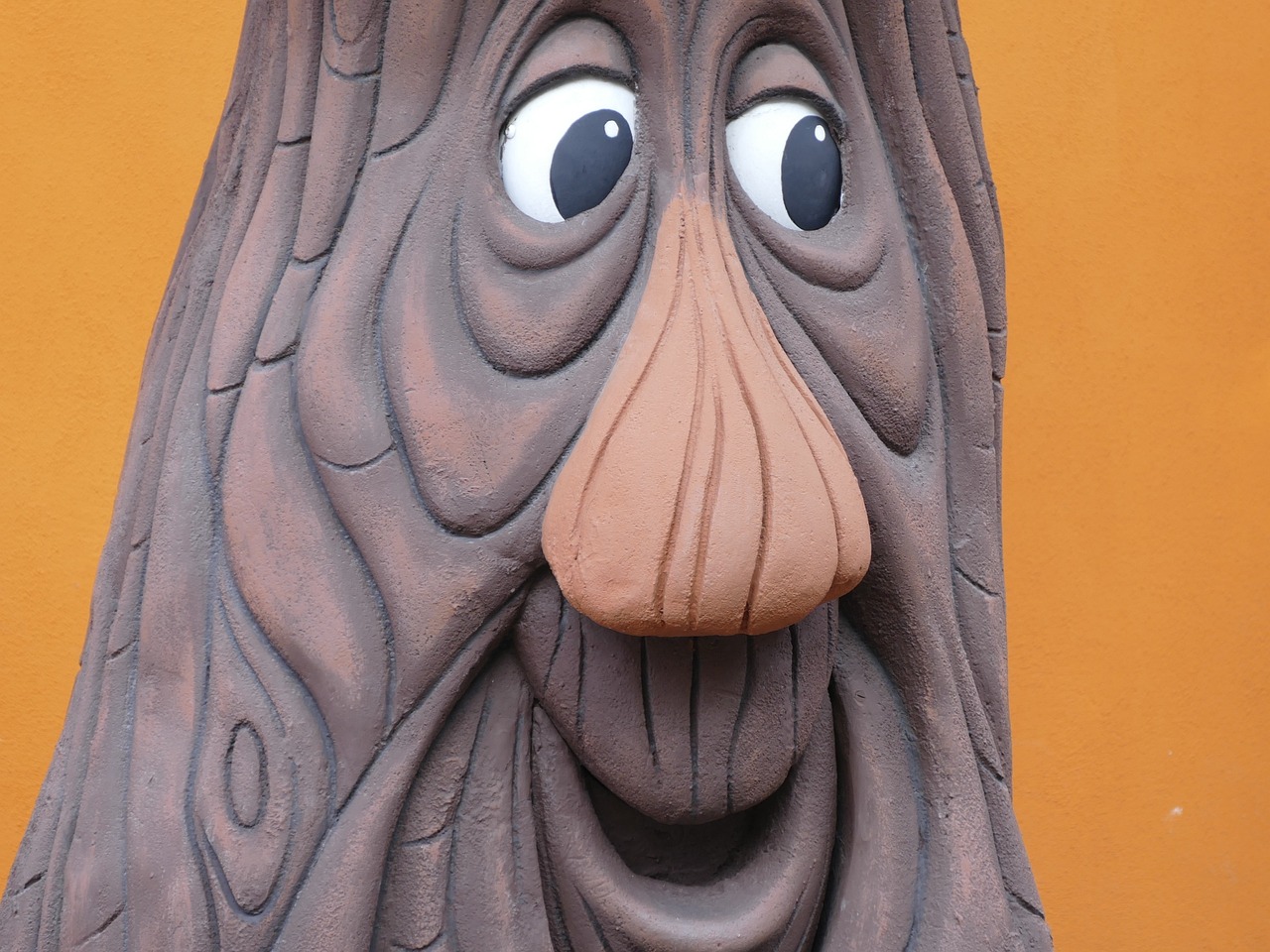
Choosing the Right Wood
When it comes to chip carving, the choice of wood is not just a trivial detail; it’s a fundamental aspect that can make or break your project. Imagine trying to paint a masterpiece on a crumbling canvas—frustrating, right? Similarly, using the wrong type of wood can lead to poor results and a lot of wasted effort. So, how do you choose the right wood for your chip carving adventures? Let’s dive into the characteristics of various woods and what makes them suitable for this intricate craft.
First off, you’ll want to consider the hardness of the wood. Softer woods like pine and basswood are popular among beginners because they are easier to carve and less likely to chip or splinter. On the other hand, hardwoods such as oak and maple provide a stunning finish and durability but can be more challenging to work with. It’s like choosing between a soft pillow and a firm mattress—both have their benefits, but it depends on what you’re looking for!
Here’s a quick overview of some common wood types and their characteristics:
| Wood Type | Hardness | Grain | Best For |
|---|---|---|---|
| Basswood | Soft | Fine | Beginners, detailed work |
| Pine | Soft | Coarse | Quick projects, decorative items |
| Oak | Hard | Open | Durable pieces, furniture |
| Maple | Hard | Fine | Intricate designs, long-lasting carvings |
In addition to hardness, the grain of the wood plays a crucial role in how your carvings will turn out. A fine, straight grain is generally preferred for chip carving as it allows for cleaner cuts and more precise detailing. If you choose wood with a coarse grain, you might find that your designs don’t hold up as well, leading to uneven surfaces and less defined shapes. Think of it like trying to draw on textured paper versus smooth paper—the results will differ dramatically!
Another factor to consider is the moisture content of the wood. Freshly cut wood can be too moist, leading to warping and cracking as it dries. It’s often best to use seasoned wood, which has been dried to a stable moisture level. This will not only improve the quality of your carvings but also extend the life of your tools, as carving through wet wood can dull blades much faster.
Lastly, don’t forget about the appearance of the wood. If you’re creating a decorative piece, the natural color and grain patterns can enhance the overall aesthetic. Consider how different finishes will interact with the wood’s natural beauty. A light stain might bring out the grain in basswood, while a clear finish could highlight the rich tones of oak.
In conclusion, choosing the right wood for chip carving is all about balancing workability, appearance, and durability. Take your time to experiment with different types, and don’t hesitate to ask fellow carvers for their recommendations. After all, the right wood can transform a simple design into a stunning work of art!
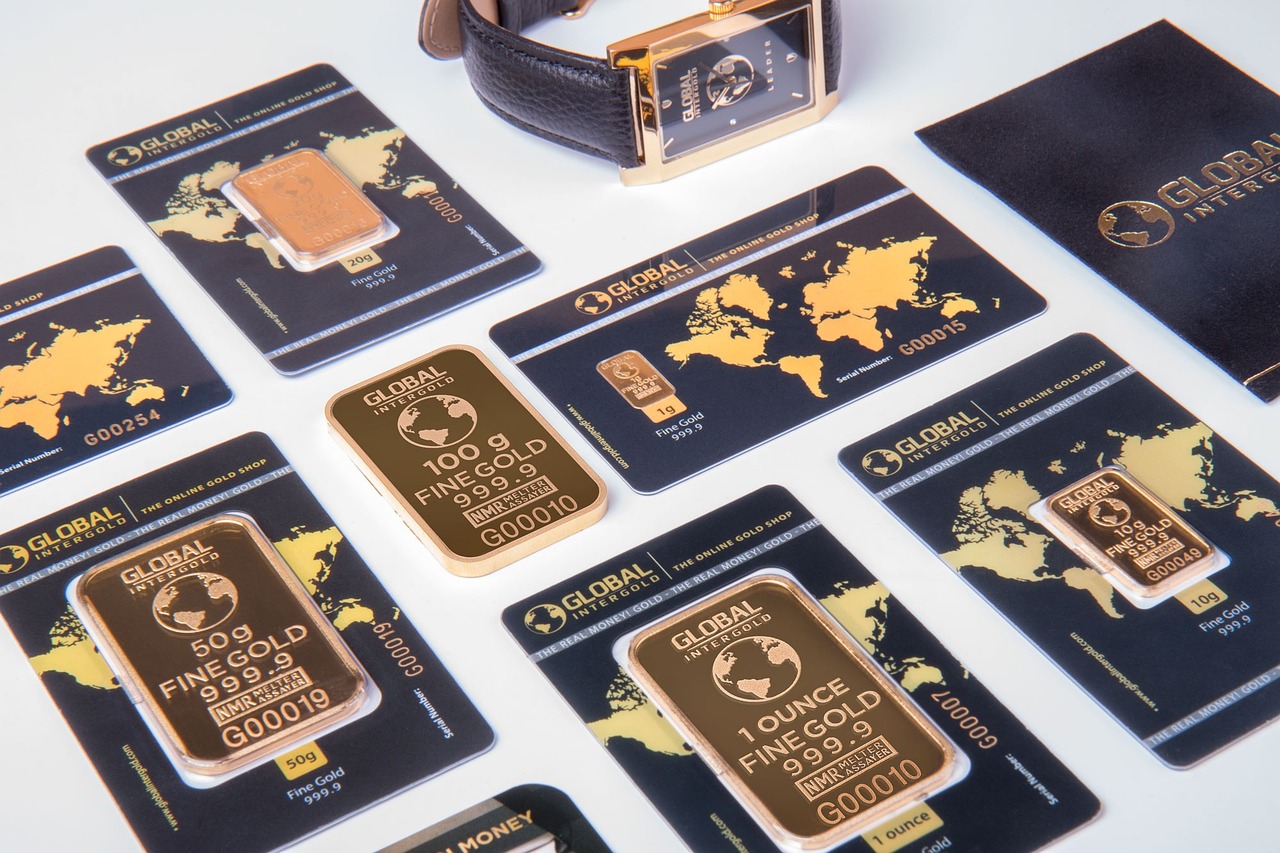
Designing Patterns for Carving
When it comes to chip carving, designing patterns is where your creativity truly shines. Think of patterns as the blueprints for your masterpiece; they guide your hands and inspire your artistic vision. Whether you're a beginner or a seasoned carver, understanding how to create or select the right patterns can significantly enhance the overall look of your projects. So, how do you go about designing these intricate patterns? Let’s dive in!
First and foremost, inspiration can come from anywhere! Nature, architecture, and even textiles can spark ideas for your designs. Take a stroll through a garden or browse through a fabric store, and you'll be surprised at how many shapes and motifs catch your eye. Keep a sketchbook handy to jot down your ideas or even draw them out. Remember, it doesn’t have to be perfect; it just needs to resonate with your artistic voice.
Once you have a few ideas, it’s time to consider symmetry and balance. Patterns that are symmetrical often create a sense of harmony, making them visually appealing. However, asymmetrical designs can also be striking and modern. Think of it like cooking: sometimes a pinch of chaos adds flavor! When sketching your designs, try to visualize how they will look on the wood surface, and don’t hesitate to play around with different layouts.
Another crucial aspect to consider is the scale of your patterns. The size of the design should complement the piece you are carving. For smaller items, intricate details can shine, while larger surfaces might benefit from bolder, more expansive patterns. A good rule of thumb is to create a few variations of the same design in different sizes. This allows you to see what works best for your specific project.
When you’ve settled on a design, you can transfer it to your wood surface. There are several methods to do this effectively:
- Tracing: If your design is on paper, you can use carbon paper to trace it onto the wood.
- Freehand Drawing: For those with a steady hand, sketching directly onto the wood can add a personal touch.
- Stencils: Creating a stencil can help ensure uniformity, especially for repeating patterns.
Don’t forget to consider the negative space in your designs. The areas around your carved elements can be just as important as the carvings themselves. Leaving some spaces untouched can create contrast and draw attention to the carved parts, making your design pop.
Lastly, remember that practice makes perfect. Don’t be discouraged if your first few attempts don’t turn out as expected. Each carving is a step toward mastering your craft. Embrace the learning process and allow your style to evolve over time. You’ll find that with each project, your ability to design and execute intricate patterns will improve.
In conclusion, designing patterns for chip carving is an exciting journey of creativity and self-expression. By drawing inspiration from various sources, paying attention to symmetry and scale, and practicing your techniques, you can create stunning pieces that reflect your unique artistic voice. So grab your sketchbook, let your imagination run wild, and start designing your next masterpiece!

Advanced Chip Carving Techniques
Once you've got the basics of chip carving down, it’s time to take your skills to the next level. This is where the real magic happens! Advanced chip carving techniques can transform your projects from simple patterns into stunning, intricate works of art. Imagine being able to create depth and dimension in your carvings that not only catch the eye but also tell a story. Are you ready to dive deeper into the world of chip carving? Let’s explore some of these advanced techniques!
One of the most exciting techniques to master is layering. This method involves carving multiple layers into your design, which can give it a three-dimensional appearance. Think of it like creating a cake with several layers; each layer adds to the overall effect. To achieve this, you’ll want to carefully plan your design, considering which parts will be raised and which will be recessed. This requires precision and a good understanding of your tools, but the results can be breathtaking!
Another technique to explore is shading. Shading in chip carving is all about creating the illusion of depth and texture. By varying the depth of your cuts and the angle at which you carve, you can simulate shadows and highlights. This technique can dramatically enhance the visual impact of your carvings. For instance, a simple leaf design can come to life with the right shading, making it appear as if it’s gently resting on the surface of the wood.
To help you understand these techniques better, here’s a simple comparison of basic versus advanced techniques:
| Technique Level | Technique | Description |
|---|---|---|
| Basic | Simple Chip Removal | Removing chips to form basic shapes and patterns. |
| Advanced | Layering | Creating depth by carving multiple layers into the design. |
| Advanced | Shading | Using varying depths and angles to create the illusion of light and shadow. |
Now, let’s not forget about texturing. Adding texture to your carvings can elevate them from ordinary to extraordinary. You can achieve this by using different tools or techniques to create patterns that mimic natural surfaces, like bark or fabric. Texturing not only adds interest but also enhances the tactile experience of your piece. Imagine running your fingers over a carved surface that feels as rich and varied as the natural world!
As you experiment with these advanced techniques, it’s crucial to maintain a sense of creativity and playfulness. Don’t be afraid to make mistakes; they can often lead to unexpected and beautiful results. Remember, chip carving is as much about the journey as it is about the final piece. So grab your tools, let your imagination run wild, and see where your advanced chip carving skills can take you!
- What is the best wood for advanced chip carving? Hardwoods like maple, cherry, and walnut are excellent choices due to their density and fine grain.
- How can I improve my shading technique? Practice varying your cut depth and angles; consider using a magnifying glass to see details more clearly.
- Are there specific tools for layering? Yes, specialized knives and chisels can help achieve the precision needed for layering techniques.

Finishing Your Chip Carvings
Once you've invested time and effort into crafting your chip carvings, the finishing touches can make all the difference. Just like a painter adds the final strokes to a masterpiece, the right finishing techniques will enhance the beauty of your work and protect it for years to come. So, what are the best ways to finish your chip carvings? Let's dive in!
First and foremost, sanding is a critical step in the finishing process. Sanding not only smooths out any rough edges but also prepares the surface for subsequent treatments. Begin with a coarse grit sandpaper (around 80 grit) and gradually move to finer grits (up to 220 grit or more). This process will help you achieve a silky-smooth surface that feels as good as it looks. Remember, patience is key here; rushing through sanding can leave you with an uneven finish.
After sanding, you might want to consider staining your wood. This step is all about enhancing the natural grain and color of the wood. Choose a stain that complements your design—darker stains can add a dramatic effect, while lighter stains can keep things bright and airy. Apply the stain evenly with a brush or cloth, following the wood grain, and wipe off any excess. Allow the stain to dry completely before moving on to the next step.
Finally, sealing your chip carvings is essential for protection against moisture, dirt, and wear. There are various sealing options available, including polyurethane, varnish, and oil finishes. Each has its unique properties:
| Finish Type | Characteristics | Best Use |
|---|---|---|
| Polyurethane | Durable, water-resistant | High-use items like trays or furniture |
| Varnish | Flexible, UV resistant | Outdoor projects or items exposed to sunlight |
| Oil Finish | Natural look, easy to apply | Decorative pieces |
When applying a sealant, use a clean brush or cloth to ensure an even coat. Multiple layers may be necessary for optimal protection, so don't hesitate to sand lightly between coats for a flawless finish. Allow each layer to dry thoroughly before applying the next one. This method not only protects your work but also enhances the overall aesthetic, bringing out the intricate details of your carving.
In conclusion, finishing your chip carvings is not just about protection; it’s about showcasing your hard work and creativity. By sanding, staining, and sealing properly, you can transform a simple piece of wood into a stunning work of art that will be admired for years to come. So, take your time, enjoy the process, and let your chip carvings shine!
- What is the best type of wood for chip carving? - Basswood is often recommended for beginners due to its softness and fine grain.
- Can I use any knife for chip carving? - It’s best to use specialized chip carving knives for precision and control.
- How do I prevent my wood from splintering? - Proper knife technique and using the right wood can help minimize splintering.
- Is it necessary to use a pattern for chip carving? - While patterns can guide your work, many carvers enjoy freehand designs for a unique touch.

Common Mistakes and How to Avoid Them
Chip carving, while a rewarding craft, is not without its challenges. Even seasoned carvers can find themselves falling into certain traps that can hinder their progress or lead to unsatisfactory results. One of the most common mistakes is not practicing enough. Many beginners underestimate the importance of practice, thinking that they can jump right into intricate designs. But just like learning to ride a bike, you need to build your skills gradually. Start with simple patterns and gradually increase the complexity as you gain confidence.
Another prevalent error is using dull tools. A sharp knife is your best friend in chip carving. Dull tools can lead to uneven cuts and increased frustration. Always ensure your knives and chisels are well-maintained and sharpened before starting a new project. This not only improves your precision but also makes the carving process more enjoyable. Remember, a sharp tool is a safe tool!
Additionally, many carvers fail to properly transfer their patterns onto the wood. This can result in misaligned designs that can ruin an otherwise beautiful piece. To avoid this, take your time with the transfer process. Use carbon paper or a light box to ensure that your design is accurately placed on the wood. It’s worth spending a few extra minutes on this step to ensure a smoother carving experience.
Another common oversight is neglecting to choose the right wood. Not all woods are created equal when it comes to chip carving. Softer woods like basswood or butternut are typically easier to carve and provide better results for beginners. Hardwoods can be challenging and may lead to frustration. Always consider the wood's characteristics before diving into a project.
Finally, many carvers rush through the finishing process. Finishing is not just about aesthetics; it also protects your work and enhances its longevity. Skipping this step can leave your carvings vulnerable to damage. Always take the time to sand, stain, and seal your work properly. This will not only make your carvings look beautiful but also ensure they stand the test of time.
In conclusion, avoiding these common mistakes can make a significant difference in your chip carving journey. Remember, every carver has faced challenges, and learning from them is part of the growth process. So, embrace the learning curve, and don’t be afraid to make mistakes along the way!
- What type of wood is best for chip carving? Softwoods like basswood and butternut are ideal for beginners due to their ease of carving.
- How can I improve my carving skills? Regular practice and starting with simple patterns can help you improve over time.
- What tools do I need to start chip carving? Essential tools include a chip carving knife, a straight knife, and a V-tool for detail work.
- Is there a specific technique for transferring patterns? Yes, using carbon paper or a light box can help ensure accurate pattern transfer.
Frequently Asked Questions
- What is chip carving?
Chip carving is a decorative wood carving technique that involves removing small chips of wood to create intricate designs. It's a fascinating art form that combines creativity with precision, allowing artists to express their unique style through detailed patterns.
- What tools do I need to start chip carving?
To get started with chip carving, you'll need a few essential tools, including a chip carving knife, a carving chisel, and a cutting board. These tools help you achieve the precision and detail necessary for beautiful carvings.
- Can beginners learn chip carving?
Absolutely! Chip carving is accessible to beginners. With practice and the right techniques, anyone can learn to create stunning designs. Start with simple patterns and gradually work your way up to more complex projects.
- What types of wood are best for chip carving?
Softwoods like basswood and pine are often recommended for beginners due to their ease of carving. However, hardwoods like cherry and maple can also be used for more advanced projects, offering different aesthetics and durability.
- How do I design patterns for my chip carvings?
Designing patterns can be a fun part of the process! You can create your own designs using graph paper or find inspiration from books and online resources. Just remember to choose patterns that match your skill level.
- What are some common mistakes in chip carving?
Common mistakes include carving too deeply, not following the pattern accurately, and using dull tools. To avoid these pitfalls, practice regularly, keep your tools sharp, and take your time to ensure precision.
- How can I finish my chip carvings?
Finishing your carvings is crucial to enhance their beauty and longevity. Techniques such as sanding, staining, and sealing can protect your work and bring out the intricate details of your design.
- Where can I find resources to improve my chip carving skills?
There are plenty of resources available! Look for books, online tutorials, and local workshops that focus on chip carving. Engaging with a community of carvers can also provide valuable tips and support.










